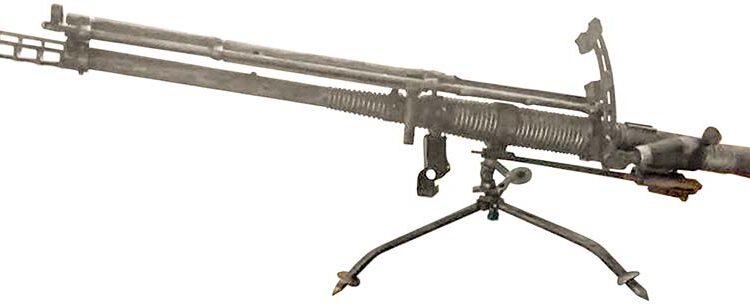By Michael Heidler –
The Red Army struggled for a long time to introduce a suitable anti-tank rifle. Early models, often created under time pressure and misconceptions and rushed into production, were not convincing in practice. The big throws followed only in 1941 with the introduction of Vasily Degtyaryov’s PTRD and Sergei Simonov’s PTRS. But it was a long way until then.
KURCHEVSKY
A rather early attempt to create a defensive weapon against armored vehicles was a recoilless rifle developed by Leonid Vasilyevich Kurchevsky in 37mm (1.45-inch) caliber. The weapon was a very unusual design even at that time. Above the barrel is a tubular magazine for up to 3 cartridges, which is loaded from the rear. To reload the weapon, the operator pushes the charging handle forward. The front cartridge falls out of the tubular magazine into a catch tray in front of the muzzle. When the charging handle is pulled back, a charging rod attached to it pushes the cartridge into the barrel as far as it will go.
The cartridge was not fired directly. Rather, a feeding device was attached to the barrel to hold a strip of ten primers. When the trigger is pulled, the firing pin strikes the primer, whose flame shoots through a hole in the chamber behind the cartridge. The heat ignites a small black powder charge attached to the base of the cartridge, which in turn ignites the cartridge’s propellant charge. Part of the gas pressure escapes to the rear via a nozzle at the barrel end, thereby significantly reducing recoil forces. However, a safety range of up to 25 meters (27 yards) behind the weapon had to be observed, otherwise painful burns could result. Firing was therefore also carried out from a height-adjustable tripod.
The 37mm armor-piercing bullet weighed 600 grams and also contained a filling of 9 grams of explosive. There was no metal casing. Instead, the projectile sat on a small bag made of woven fabric, which contained the low-smoke propellant powder (190 grams) and at the end of which the black powder charge was placed. When fired, it resulted in a muzzle velocity of 525 m/s (574 yd/s) and an effective range of up to 500 meters (545 yard). Aiming was done via a magnifying telescopic sight.

Adopted in 1932, serial production began immediately. In practice, however, Kurchevsky’s weapon proved to be dangerous. Carelessness or defects easily led to accidents. In addition, the design was complicated and prone to failure. The penetration performance of only 25mm (1in) of steel at 100 meters (109 yards) soon proved to be insufficient. Production ended as early as the end of the 1930s and the weapon was taken out of service.
Kurchevsky designed a variety of primarily recoilless weapons during his career, from rifles to artillery. He also tried his hand at vehicles, boats, and even a glider. Unfortunately, he failed to achieve great success. Most of the weapons had serious defects and were not suitable for wartime use. In June 1937, Kurchevsky was arrested in the course of a purge in the Red Army, charged with creating unfit weapons, and sentenced to death on November 25, 1937.
After the failure of Kurchevsky’s recoilless weapon, the Army tested other experimental weapons in 1936 in smaller calibers between 20mm (0.8-inch) and 25mm (1-inch). But most of them were far too heavy for flexible use by the infantry. In the further series of tests from 1936 to 1938, weapons with even smaller calibers from 12.7mm (0.5-inch) were then allowed to participate. Even if none of these weapons was adopted in the end, it was at least possible to agree on the future cartridge.
The small arms research and testing facility NIPSVO in Shchurovo had developed a powerful cartridge in 14.5x114mm caliber. Its lead bullet contained a hardened steel core and was covered by a metal jacket. With a muzzle energy of over 30kJ, it was almost three times as powerful as German or Polish cartridges. However, the case contained impressive 30.9 grams of propellant powder.


RUKAVISHNIKOV
In November 1938, the GAU Artillery Committee laid down the requirements for a new portable anti-tank rifle. The caliber now had to be 14.5mm (0.58-inch). Of the sample weapons submitted, the rifle made by N.V. Rukavishnikov performed best. The weapon was a semi-automatic gas operated rifle with a rotating-bolt and cartridge fed from a 5-round magazine inserted on the left side. A massive muzzle brake and padded shoulder rest provided tolerable recoil forces for the operator. The scale of the sight extended to 1.000 meters (1,090 yards).
In firing tests, the weapon achieved a penetration rate of 20mm (0.8-inch) at 500m (545 yards) under optimum conditions. An experienced crew managed a firing rate of about 15 rounds per minute. After this satisfactory test, the committee proposed the weapon for adoption on October 7, 1939 as the “14.5 mm PTR 39” (Protiwotankovoje Ruschjo / Tank Rifle). After the production of 50 pieces for a small troop trial, another 15,000 pieces were to be produced initially from 1940 onwards after the establishment of serial production in the Instrument Factory No. 2 “K. O. Kirkisch” in Kowrow. The goal was to equip each infantry division with 60 anti-tank rifles.
But it did not come to that. For one thing, the introduction of the weapon was somewhat premature, because during further testing, the powerful cartridge repeatedly caused malfunctions and extraction problems. This could certainly have been solved. But on the other hand, Russian intelligence also made a fatal mistake: they estimated the armor thickness of German tanks for a future war at 60mm (2.4 inches) to 80mm (3.1 inches)! This sobering information led the GAU Artillery Committee to abandon all efforts to develop a portable anti-tank rifle for the infantry. From then on, the focus was on anti-tank cannons.
When the Wehrmacht invaded the Soviet Union in June 1941, the surprise was great. The tanks were far less heavily armored than had been assumed. In its need, the Red Army scraped together everything it could get its hands on for use on the front. Among them were numerous experimental and small-series weapons and Polish captured specimens. A possible series production of Rukavishnikov’s weapon was also examined once again, but in view of the chaotic circumstances in this early phase of the war, the plan was discarded. Even Rukavishnikov’s simplified single-loader model did not go into production.

SHOLOKHOV
The shortage of anti-tank rifles in the early stages of the war could not be solved in a hurry. There was a lack of models suitable for combat use and engineered for mass production. Engineer V.N. Sholokhov therefore proposed in July 1941 that the German Mauser tank rifle from World War I be copied – but for a cartridge in 12.7x108mm caliber. In the early 1930s, tests had been carried out with it in Tula.
The gun was very simple to manufacture, without complicated mechanics. Deviating from the German model, Sholokhov added a muzzle brake and padding for the shoulder rest. The sight had three settings for 200, 400 and 600 meters (218, 436, 654 yards). This was very optimistic, as its performance left a lot to be desired. The early B-32 armor-piercing incendiary projectile with a hardened steel core did little to harm German tanks. The improved BS-41 bullet with a tungsten core penetrated 15mm (0.6-inch) of steel at 400m (436 yards). In action, of course, this was far too little.

Nevertheless, series production of the weapon began in July 1941. The need was simply too great. The workshops of the Moscow Technical University “Nikolai E. Bauman” (MSTU) and the experimental design bureau OKB-16, also in Moscow, which was otherwise mainly engaged in the development of automatic cannons for aircraft, were chosen as production sites.
The production quantity of a few hundred pieces was nevertheless no more than a drop in the bucket. The weapons were used in the defense of Moscow from the fall of 1941. After the successful course of the battle and the retreat of the German units in the spring of 1942, Sholokhov’s anti-tank gun disappeared into the arsenals or was handed over to partisans for disruptive actions. Incidentally, between 1941 and 1944, the Soviet Union received about 3,200 British Mark I anti-tank guns and 1.5 million rounds from Great Britain under the Lend-Lease agreement.
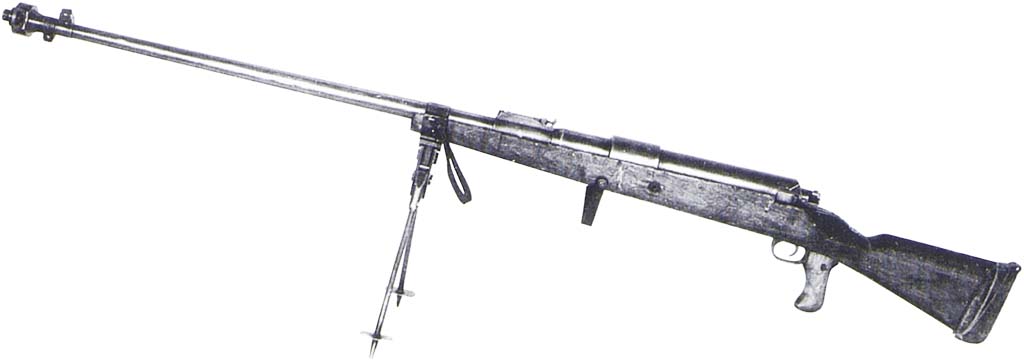
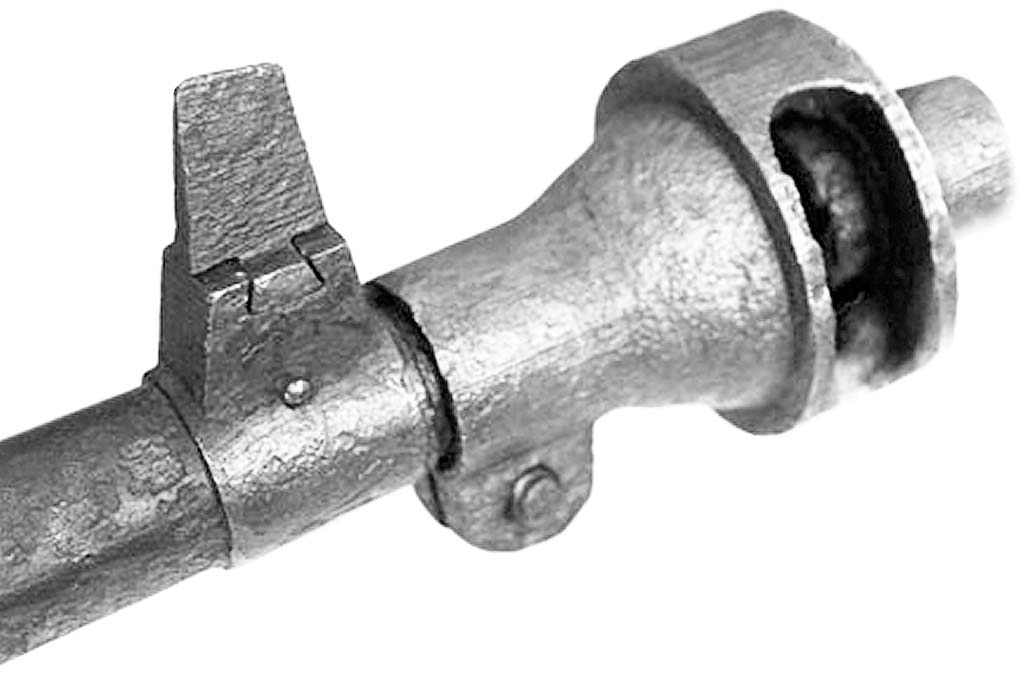
Technical data (model Kurchevsky):
- Caliber: 37 mm
- Length: 200 cm (78.7 inches)
- Length of barrel: 125 cm (49.2 inches)
- Weight (with tripod): 32 kg (70.5 pounds)
- Magazine capacity: 3 rounds
Technical data (model Rukavishnikov):
- Caliber: 14.5×114 mm
- Length: 198 cm (77.9 inches)
- Length of barrel: 118 cm (46.5 inches)
- Weight (empty): 17.75 kg (39 pounds)
- Magazine capacity: 5 rounds
Technical data (model Sholokhov):
- Caliber: 12,7×108 mm
- Length: 179.5 cm (70.7 inches)
- Length of barrel: 100 cm (39.4 inches)
- Weight (empty): 16.6 kg (36.6 pounds)
- Magazine capacity: single loader
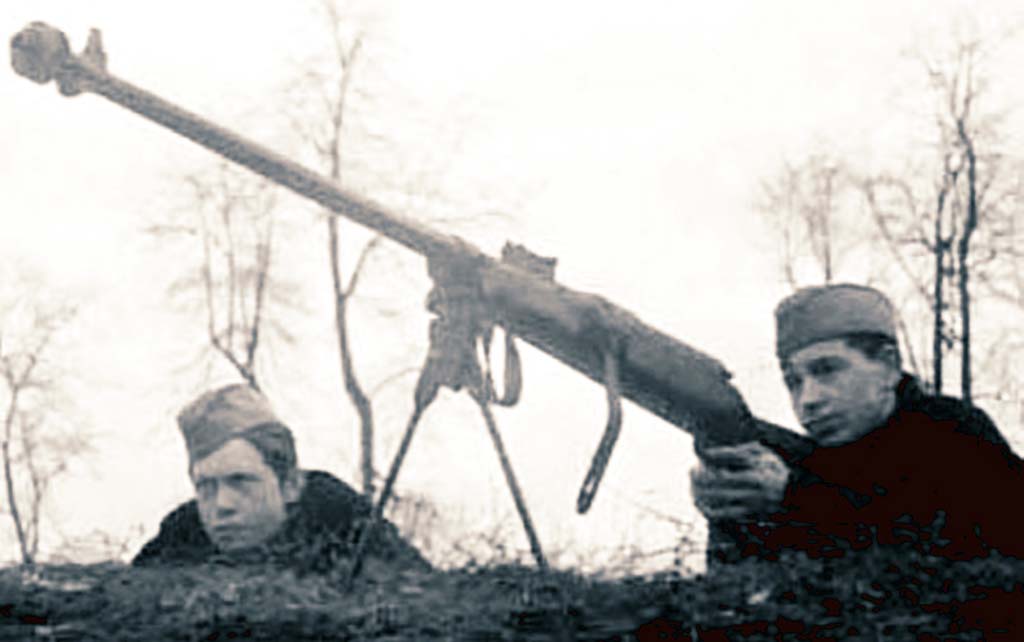
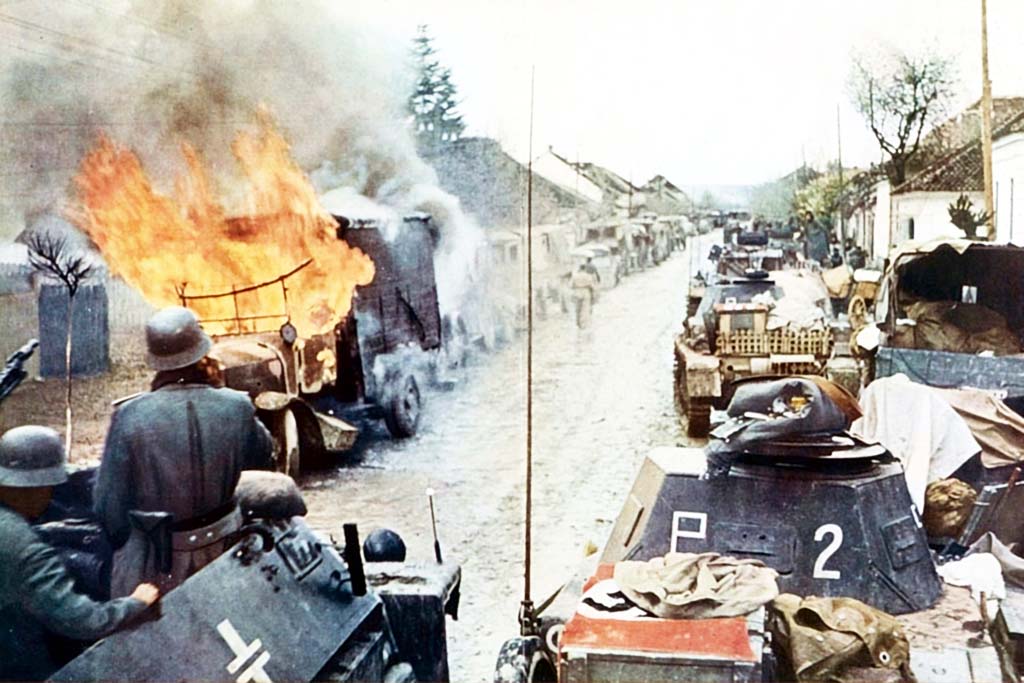
| This article first appeared in Small Arms Review V26N1 (January 2022) |



